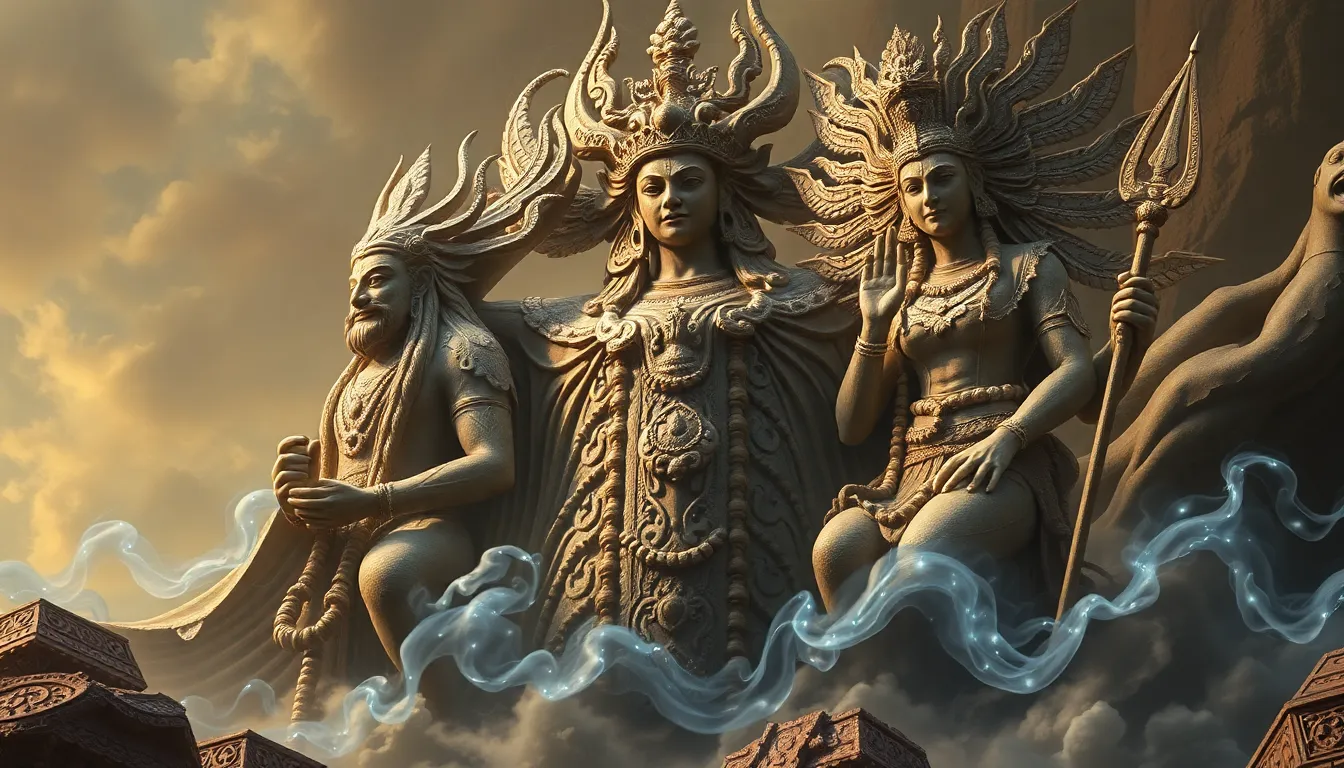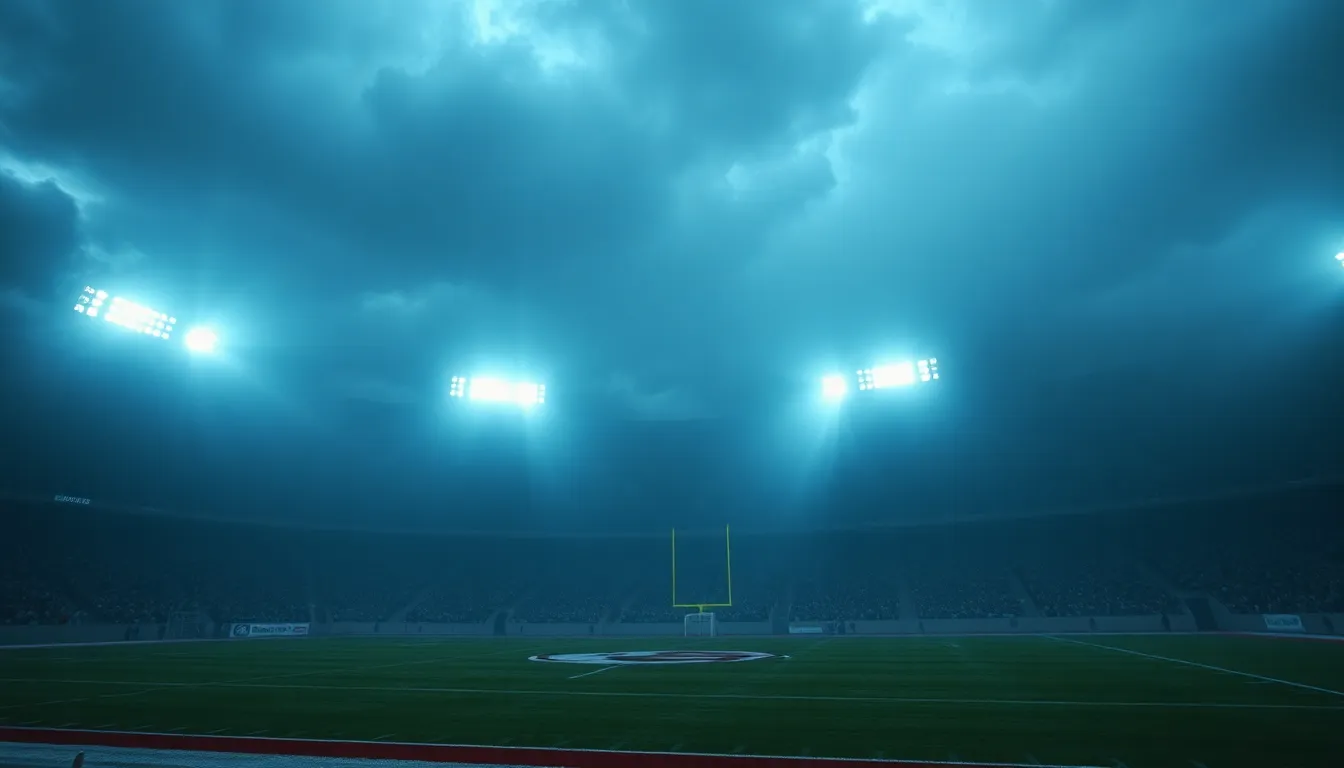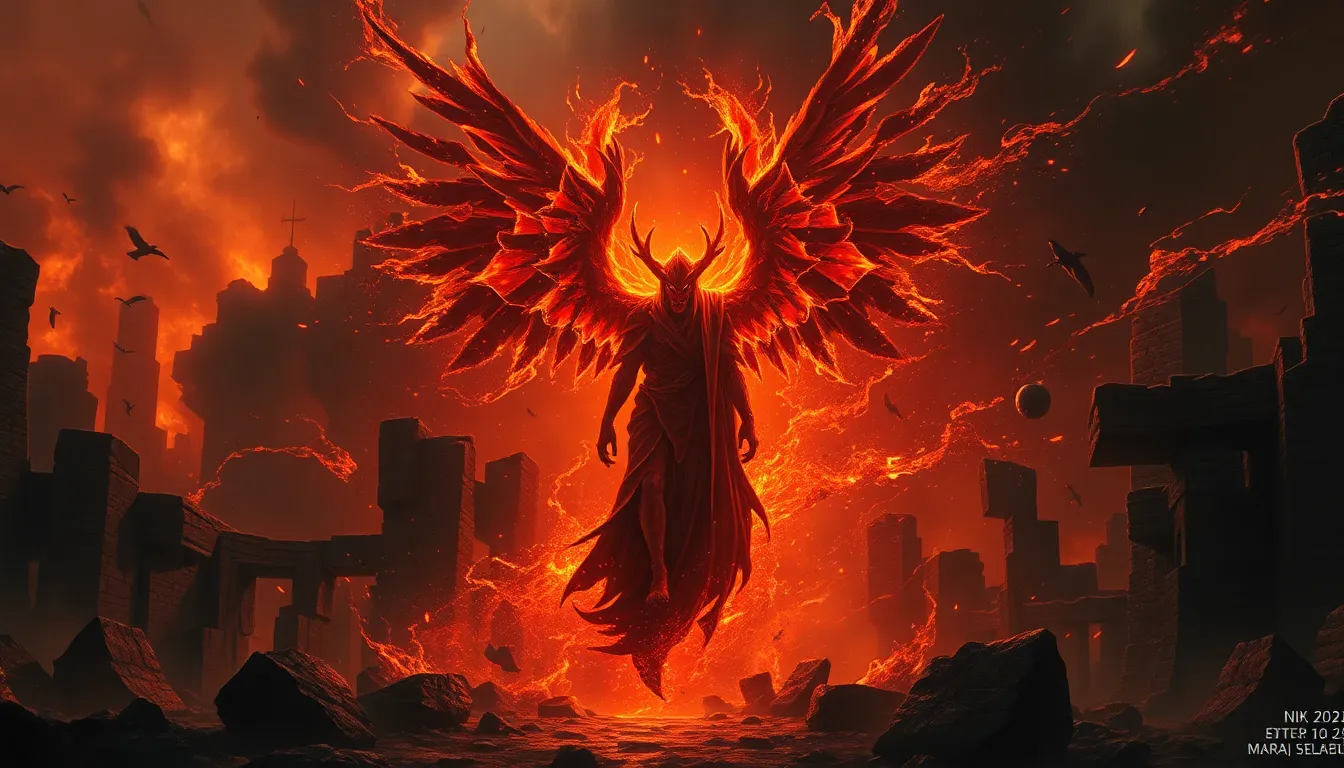The Artistic Representations of Ancient Deities: A Visual Journey
I. Introduction
Ancient deities have been a fundamental part of human history, embodying the beliefs, values, and aspirations of various cultures throughout time. These divine figures, ranging from the gods of Egypt to the pantheon of Greece and Rome, hold significant importance in understanding the spiritual and social dynamics of their respective civilizations. Artistic representations of these deities serve as a vital medium through which we can explore their attributes, narratives, and the cultural contexts in which they were revered.
This article aims to provide a visual journey through the artistic representations of ancient deities, highlighting their historical contexts, common themes, mediums used, and specific case studies from notable civilizations. By examining these aspects, we can gain deeper insights into how these representations shaped and reflected the beliefs of ancient peoples.
II. Historical Context of Ancient Religions
To understand the artistic representations of ancient deities, it is essential to consider the historical contexts of major ancient civilizations. Each civilization had its own unique pantheon of gods and goddesses, reflecting their cultural values and social structures.
- Egyptian Civilization: Known for its rich mythology and elaborate burial practices, the Egyptians revered gods like Ra, Osiris, and Isis, who played essential roles in their understanding of life and death.
- Greek Civilization: Greek mythology is populated with gods such as Zeus, Hera, and Athena, whose stories were intertwined with the daily lives of the people and provided explanations for natural phenomena.
- Roman Civilization: The Romans adopted many Greek deities, often renaming them and adapting their attributes, which reflected their imperial ambitions and societal norms.
- Mesopotamian Civilization: In ancient Mesopotamia, gods like Marduk and Ishtar were central to the culture, influencing everything from agriculture to warfare.
Mythology in these cultures often played a critical role in shaping cultural identity, providing narratives that reinforced social hierarchies and moral values. As societies transitioned from polytheism to monotheism, especially during the rise of Christianity, the nature of divine representation in art also evolved, often reflecting the changing spiritual landscape.
III. Common Themes in Artistic Representations
Artistic representations of ancient deities frequently incorporate common themes that convey their power, personality, and significance within their respective cultures.
- Symbolism of Power and Divinity: Many works of art symbolize the divine authority of deities through attributes such as thrones, scepters, and other regal insignia.
- Anthropomorphism: Deities are often depicted in human form, allowing for a relatable representation that reflects human traits, emotions, and experiences.
- Gender Representation: The roles of male and female deities often illustrate societal norms, with male gods frequently associated with power and authority, while female deities embody fertility, motherhood, and nurturing.
IV. Mediums and Techniques Used in Art
Various mediums and techniques have been employed throughout history to create artistic representations of deities, each contributing to the richness of the visual narrative.
- Sculpture: Stone, bronze, and clay were commonly used to create lasting representations of deities. The intricacy of these sculptures often reflects the skill and resources available to the civilization.
- Painting and Frescoes: Ancient artists utilized natural pigments and techniques such as fresco painting to depict deities in vibrant colors, often found in temples and tombs.
- Pottery and Textiles: Everyday items, such as pottery and textiles, served as canvases for artistic expression, showcasing deities in domestic contexts and rituals.
V. Case Study: Egyptian Deities
The ancient Egyptians developed a rich iconography to represent their deities, with gods like Ra, Isis, and Anubis holding prominent places in their mythology.
- Iconography: Ra, the sun god, is often depicted with a falcon head and a sun disk, symbolizing light and creation. Isis, the goddess of magic and motherhood, is typically represented with a throne-shaped headdress.
- Artistic Styles: Tomb paintings and temple reliefs showcased not only the deities but also the values and beliefs of the society, often illustrating scenes of worship and divine intervention.
- Hieroglyphics: The use of hieroglyphics in conjunction with images provided a narrative context, allowing for the storytelling of divine myths and the roles of gods in the afterlife.
VI. Case Study: Greek and Roman Deities
In ancient Greece and Rome, the portrayal of deities was deeply embedded in public art and architecture, influencing the cultural landscape significantly.
- Classical Sculpture: Deities like Zeus and Athena were skillfully represented in marble and bronze, embodying idealized human forms that conveyed strength and beauty.
- Public Art and Architecture: Temples such as the Parthenon were dedicated to gods, showcasing intricate sculptures and friezes that depicted mythological narratives.
- Transition to Roman Interpretations: The Romans adopted Greek deities, often merging their characteristics and stories, which reflected the cultural assimilation during the expansion of the Roman Empire.
VII. Case Study: Mesopotamian Deities
The artistic representations of Mesopotamian deities provide insight into one of the world’s earliest civilizations.
- Cylinder Seals and Reliefs: These small carved stones often depicted gods in action, providing a glimpse into the religious practices and beliefs of the time.
- Role of Ziggurats: Ziggurats served as temples dedicated to specific deities, with their architectural grandeur symbolizing the connection between the divine and the earthly.
- Symbolic Meanings: Common Mesopotamian icons, such as the winged sun or the lion-headed figures, conveyed specific attributes of the deities, such as protection and power.
VIII. The Influence of Art on Cultural Memory
Artistic representations of ancient deities have played a crucial role in preserving cultural memory and traditions, influencing both past and contemporary practices.
- Preservation of Beliefs: Art has served as a vessel for ancient beliefs, allowing future generations to connect with and understand the values and stories of their ancestors.
- Rituals and Worship: Many artistic representations were integral to rituals, enhancing the spiritual experience and connecting worshippers to the divine.
- Modern Reinterpretations: Contemporary artists often draw inspiration from ancient deities, reinterpreting their stories and symbols to resonate with modern audiences.
IX. Challenges in Interpreting Ancient Art
Interpreting ancient art poses several challenges, primarily due to the passage of time and the complex nature of cultural exchange.
- Time’s Impact: The deterioration of materials and loss of context can lead to misinterpretations of artistic intent and significance.
- Cultural Appropriations: Modern interpretations of ancient deities can sometimes lead to cultural appropriation, where the original meanings and contexts are overlooked or distorted.
In conclusion, the artistic representations of ancient deities provide a profound insight into the beliefs and values of past civilizations. Through various mediums and styles, these representations continue to shape our understanding of human spirituality and cultural identity, bridging the gap between the ancient and the modern world.



